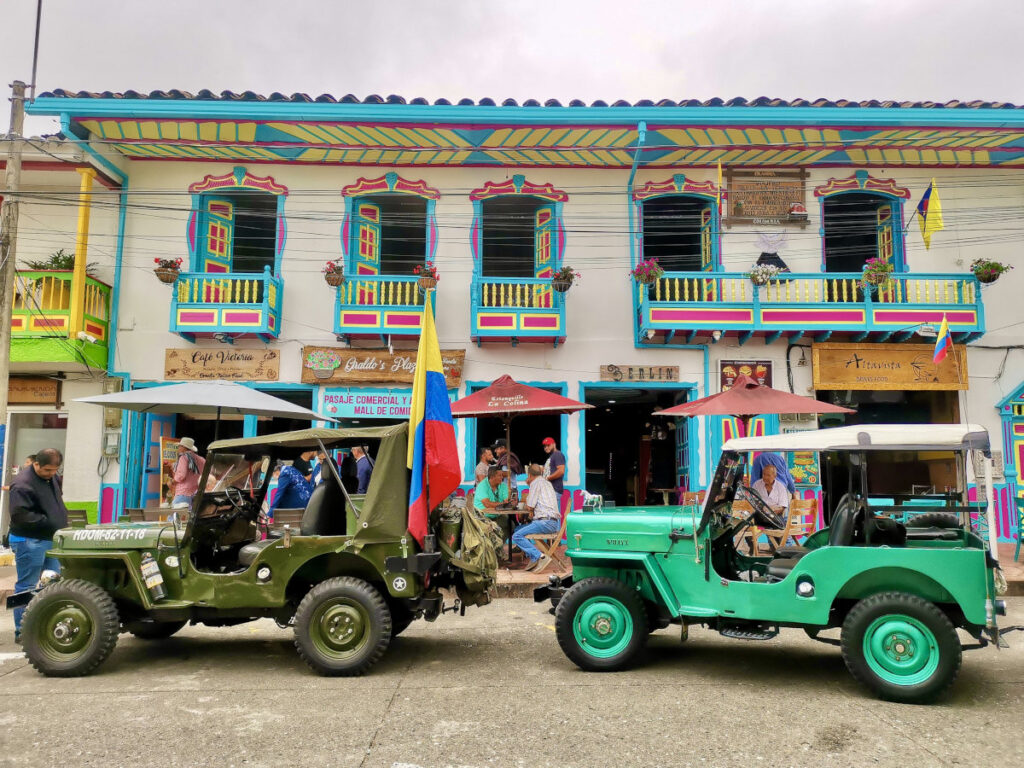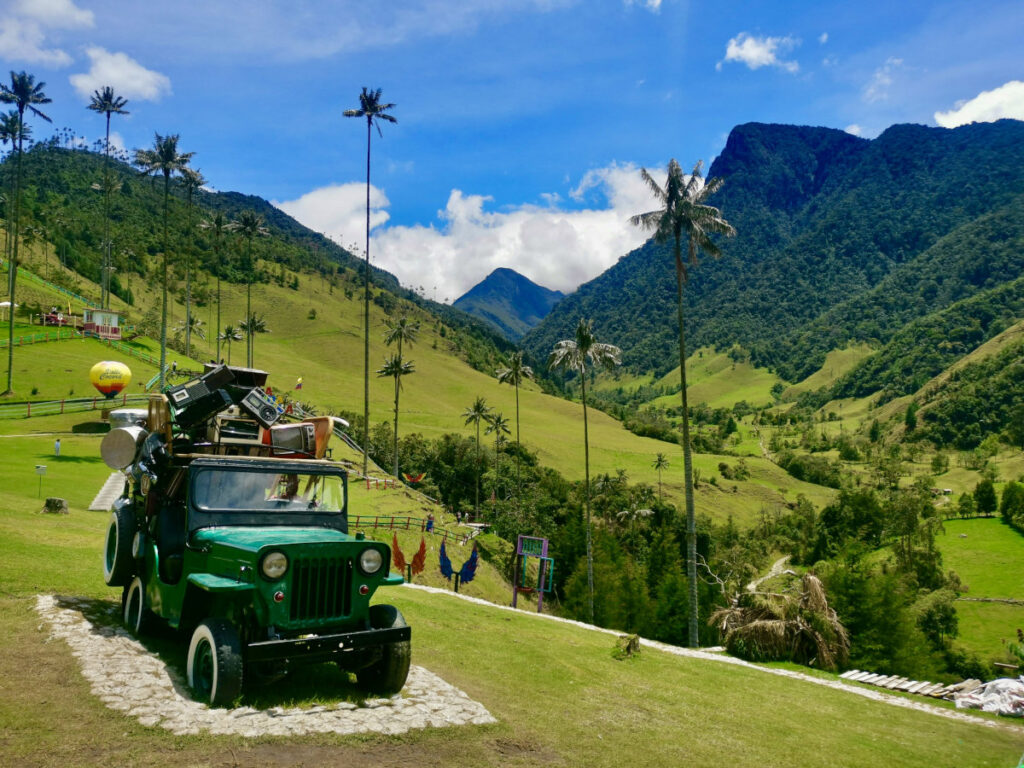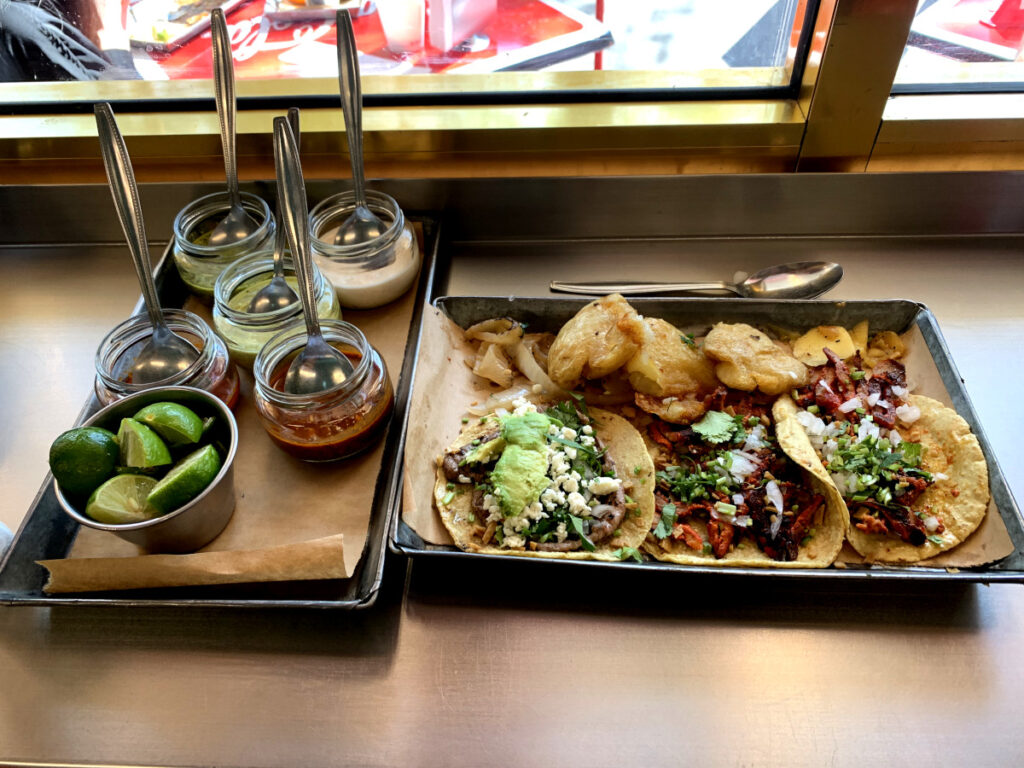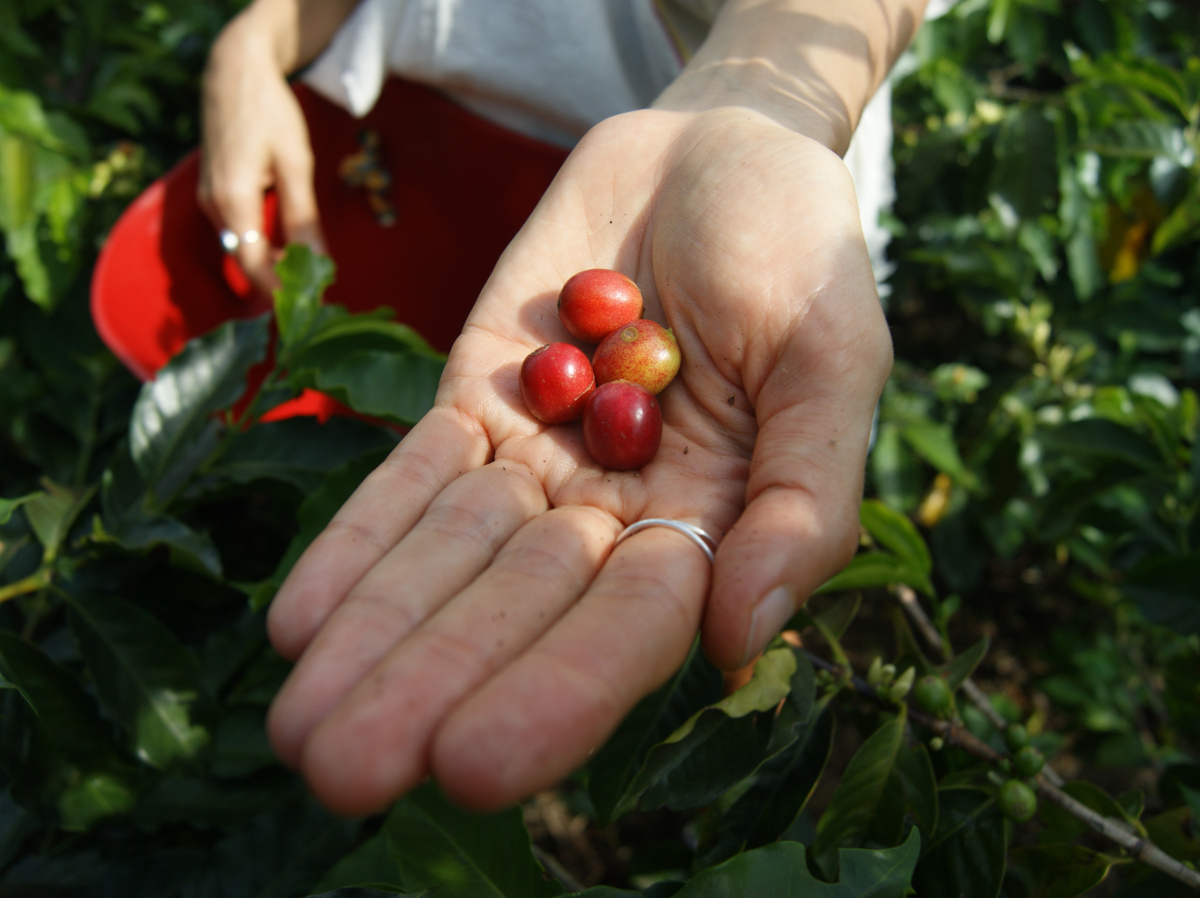
Medellin Coffee Tour: From Tree to Cup
Some of the best coffee in the world is grown in Colombia. Many travelers head to the famous coffee region for a coffee tour. But you can also do a Medellin coffee tour and visit beautiful farms right on the edge of the city.
We visited Rituales Cafe in Medellin and were told they get their beans from a farm in Medellin. The coffee was amazing so we decided we had to visit it.
The tour with Urban Coffee Tours Medellin is one of the best tours I have ever been on and one of the best things to do in Medellin.
It’s more than a coffee tour: You will learn a lot about Medellin’s history, visit Comuna 8, ride the cable car, and handpick your own cup of coffee ☕️ Plus you will support the community with the tour fee!
🧑🌾 Be a farmer for 1 day with Urban Coffee Tours Medellin
Before we dive into all the tour details and why we picked Urban Coffee Tours Medellin over other tour operators (there are many!) we need to clarify one important question…
Why is Colombian Coffee so good?
The reason Colombian coffee is so good is that it has the perfect geography and climate. To grow high-quality coffee with complex flavors and aromas you need the right…
1. Temperature ☀️ Coffee grows best between 15-24°C (59-75F)
2. Altitude ⛰️ The highest quality coffee grows above 1400m (4500ft)
3. Soil 🪴 Volcanic soil has the right nutrients for flavorful coffee
4. Rain 🌧️ Coffee needs 150 -250 cm (60-100 in) of rainfall per year
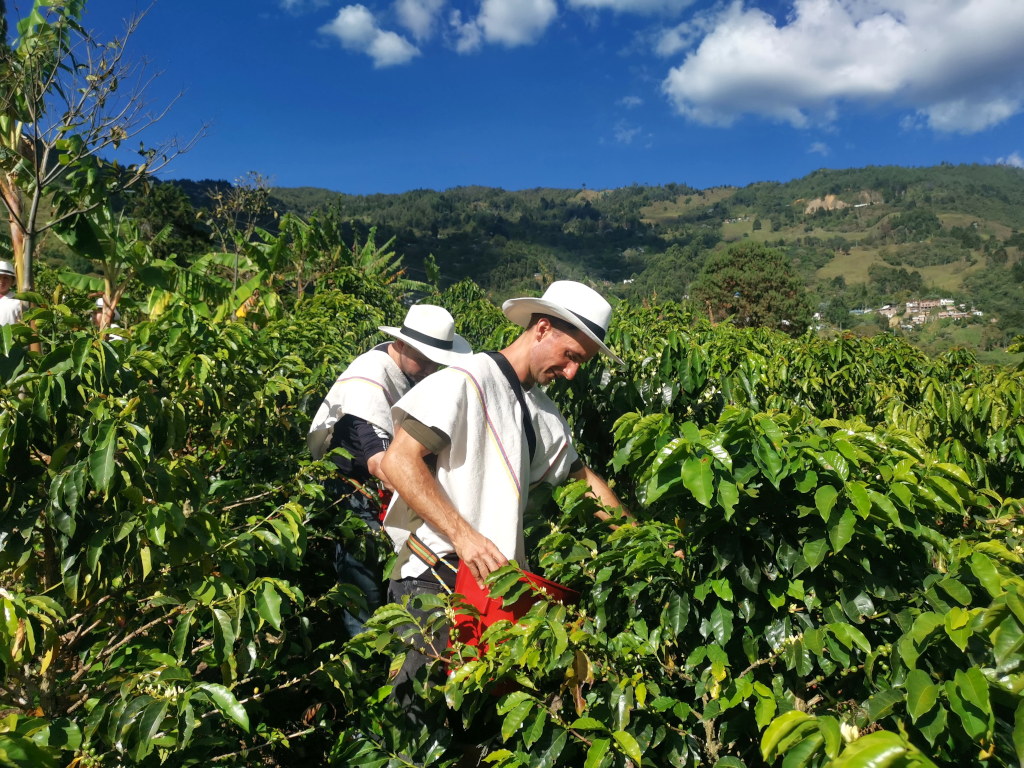
Colombia is blessed with beautiful mountains and year-round warm temperatures. To grow high-quality coffee beans temperatures need to be between 15-24°C (59-75F) and the altitude needs to be above 1400m (4500ft).
Because Colombia is located near the equator temperatures at high altitudes remain warm. At similar altitudes in Europe or North America, the temperature would be cold year-round.
The reason high altitude creates a higher quality bean is that the beans take longer to grow at this altitude. This creates a harder bean with more complex flavors. If the beans are grown at lower temperatures the beans will be softer and lack flavor.
At these altitudes in Colombia, there is plenty of rainfall for the beans to grow. This also makes it a beautiful country to explore as there are green hills everywhere! And what is better than a delicious cup of coffee with a view? 🌳
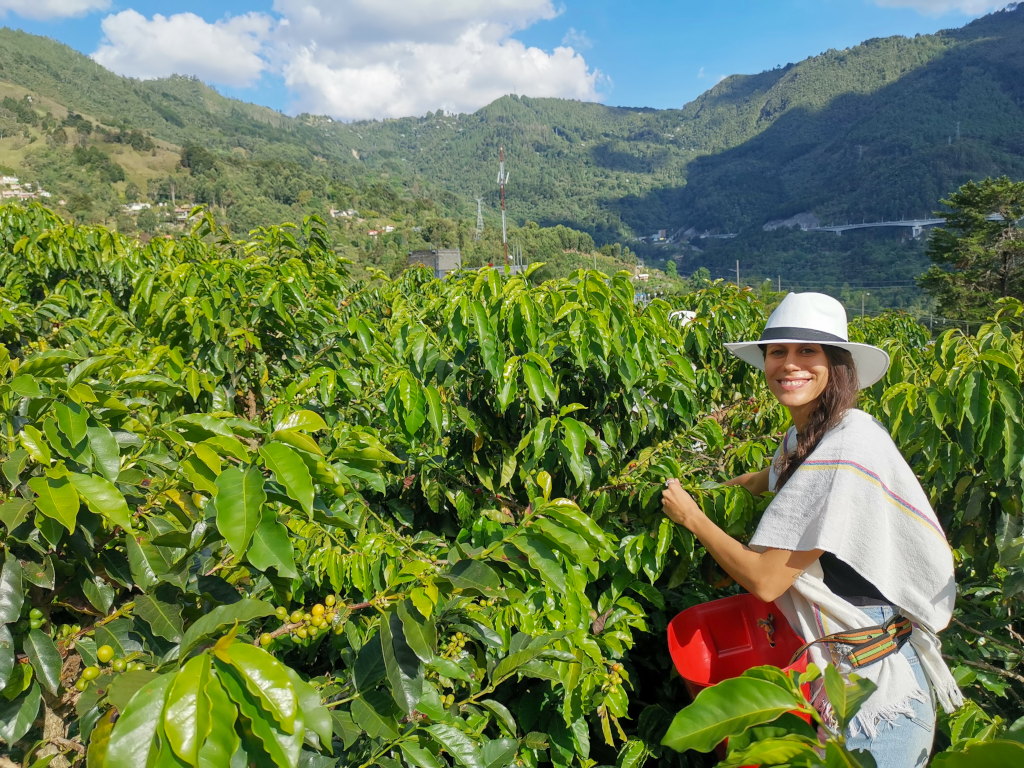
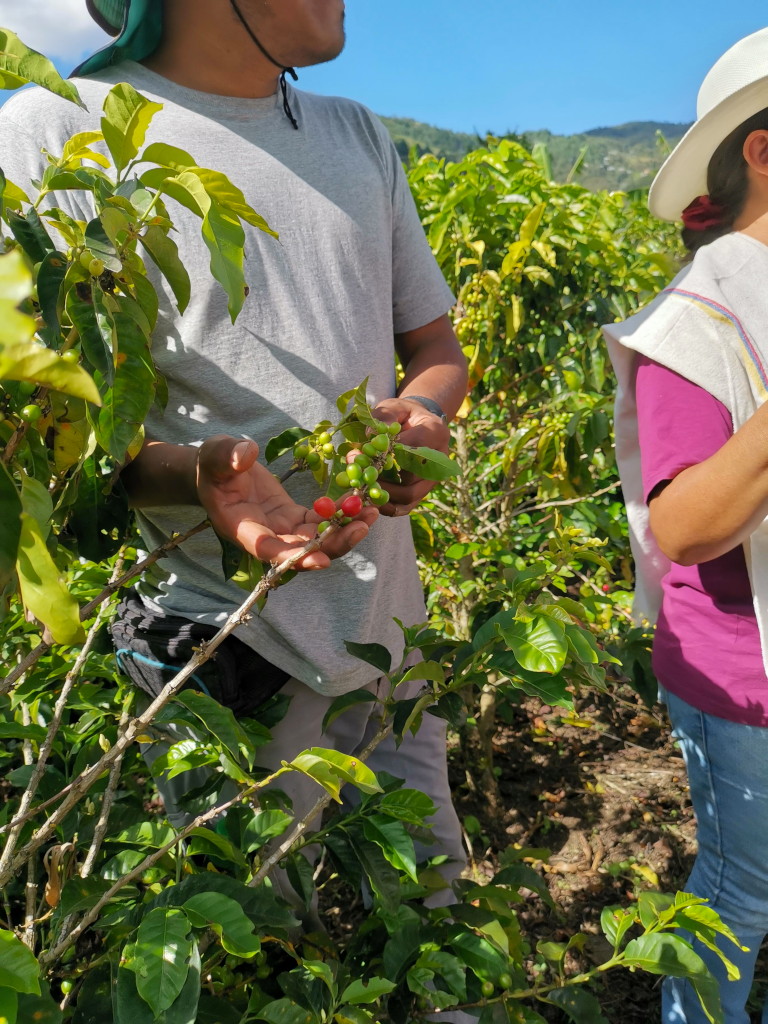
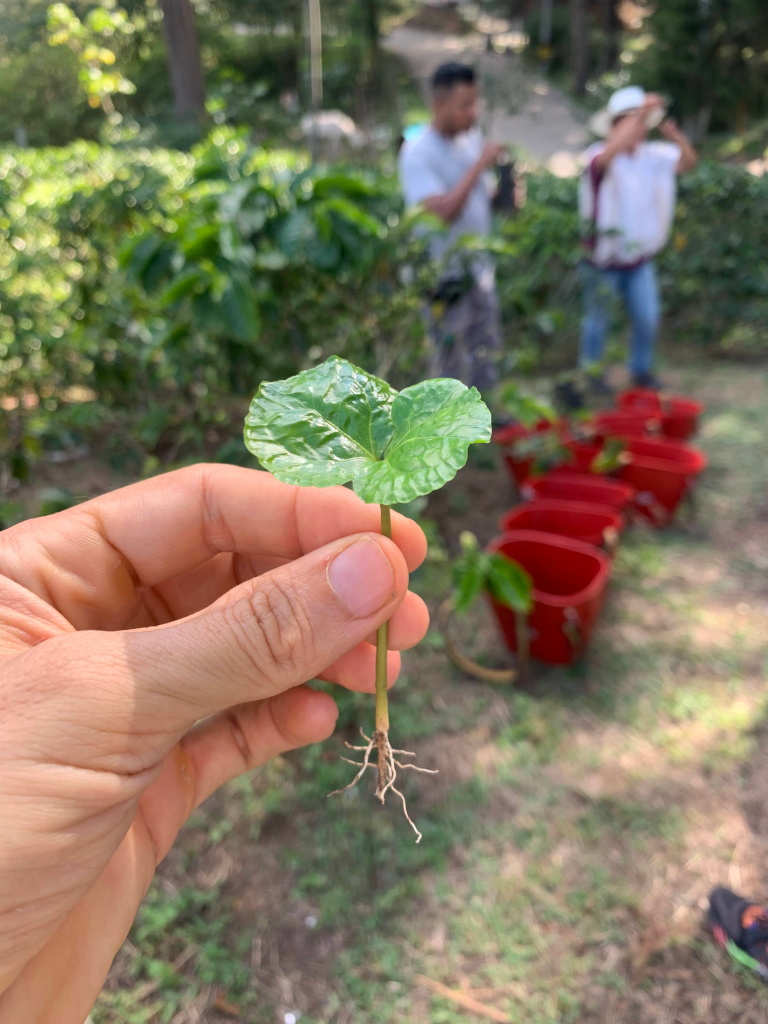
The last factor that makes Colombia a great place to grow coffee is the soil. Volcanic soil has all the nutrients needed to create complex flavors and Colombia has a lot of Volcanic soil.
All these factors together mean that Colombia is a great place to grow coffee. Including the green hills around the 4 million people metropolis Medellin which surprises most people 🌱
Where is the best coffee grown in Colombia?
The best coffee beans in Colombia are grown in “La Zona Cafetera” south of Medellin which literally translates to Coffee Zone.
It’s a lush, green and mountainous region which is – besides its great coffee culture – worth a visit on its own. We spent 3 weeks there and loved it!
🌳 Read also: Our Zona Cafetera tips from Jardin and Salento – the best towns to stay and explore Colombian’s coffee region (Coming soon!)
Artisanal Coffee in Colombia
Although Colombia is the 3rd largest producer of coffee worldwide and grows one of the best beans, up until recently you could not find much good coffee in Colombia.
Most of the good coffee in Colombia was exported overseas and Colombians drank the poor quality coffee. But about 15 years ago there was a movement to start using local beans to make good coffee in Colombia. Yeah!
☕️ Drink Medellin’s best coffee in these cafes in Laureles
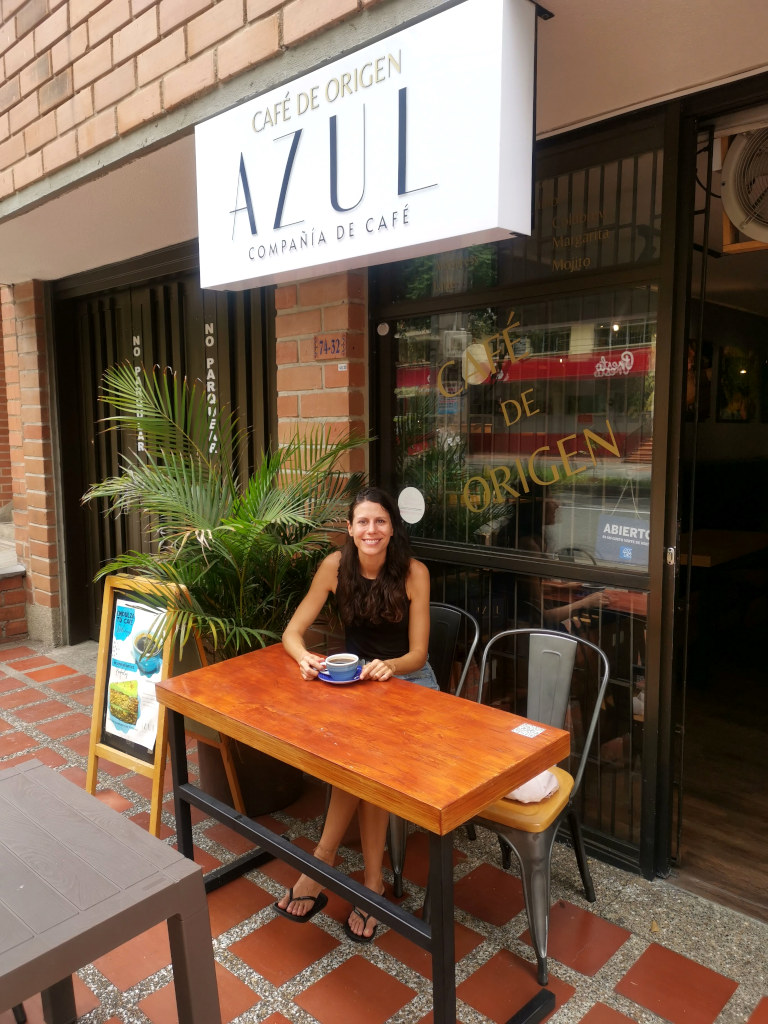
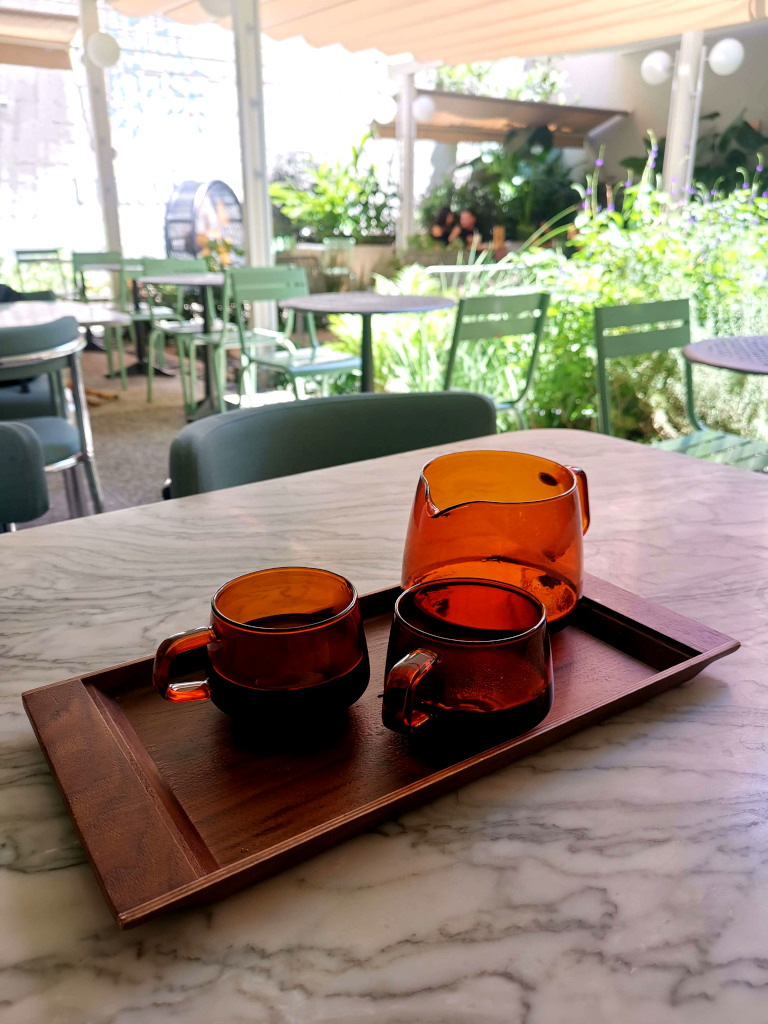
Medellin Coffee Tours
There are many coffee tours in Medellin and operators to choose from. You will find many on GetYourGuide, Viator, Airbnb Experiences and advertised on posters in cafes.
Many cafes in Laureles (see here a list of our favorites!) actually serve coffee with beans from the nearby farms and sell the bags too, so keep an eye out.
Urban Coffee Tour (Our favorite Medellin Coffee Tour!)
We chose to do a tour with Urban Coffee Tour Medellin because:
- It’s locally run by a woman Rosa who lives in Comuna 8 (where the farm is) and will be present during the whole tour in addition to the tour guide
- The tour fee goes to the community, not to an operator and is very affordable
- It has excellent reviews (5 stars on Google Reviews)
- You will get to ride the cable car (included) and have beautiful views
- You will handpick your own beans and learn everything about coffee
- Plus you will learn about Comuna 8 and Medellin coffee history
- You will walk through a peaceful part of Medellin you would never visit otherwise
- You will get to drink artisanal coffee with a delicious pastry fresh from the oven
- Tours are in English (your guide will translate all the farm owners say)
- Small group sizes: 8 people maximum
After doing my research and experience I think they offer the best Medellin Coffee Tour. But if you can recommend others, please share them in the comments at the end!
🫘 Learn how real coffee is made at Urban Coffee Tours Medellin
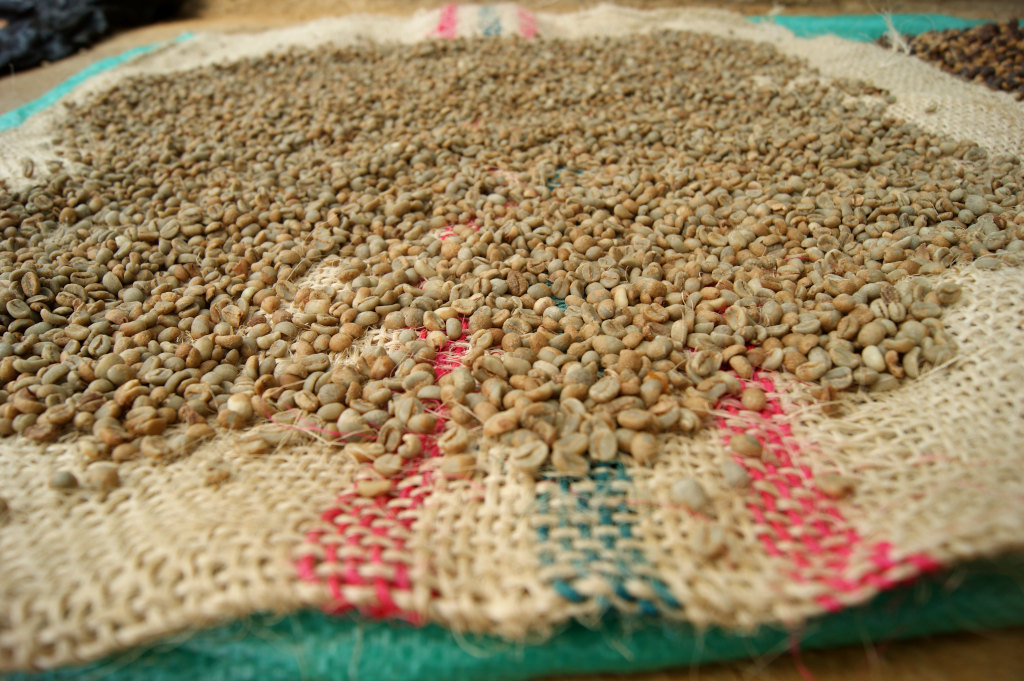
Who runs Urban Coffee Tour Medellin
Urban Coffee Tour was started by a local guide who wanted to share with tourists that high-quality coffee can be grown right in the city.
On the tour, you will be taken to a working coffee farm that is run with a strong emphasis on ethical practices. Rosa is the local lady whose father started the farm and she runs the farm today.

Rosa’s father was one of the first local farmers who started to sell his beans locally and started the artisanal coffee trend.
Rosa joins the tours and is very involved in several projects to improve the community. So it is good to know that money from the tours will help.
The tour also felt very personal because Rosa came to meet us at the pickup point. So you do not feel like you are being pushed through a tourist trap.
La Sierra Neighborhood (Comuna 8 Medellin)
The tour takes place in La Sierra or Comuna 8 which used to be one of the most dangerous places in Medellin. It is an area with a very similar story to Comuna 13 on the other side of the valley.
During the early 2000s, there were frequent shootouts between youth gangs who fought for control of territory in La Sierra. This resulted in the residents living in a mini-war zone.
Read also: Comuna 13’s transformation ✨
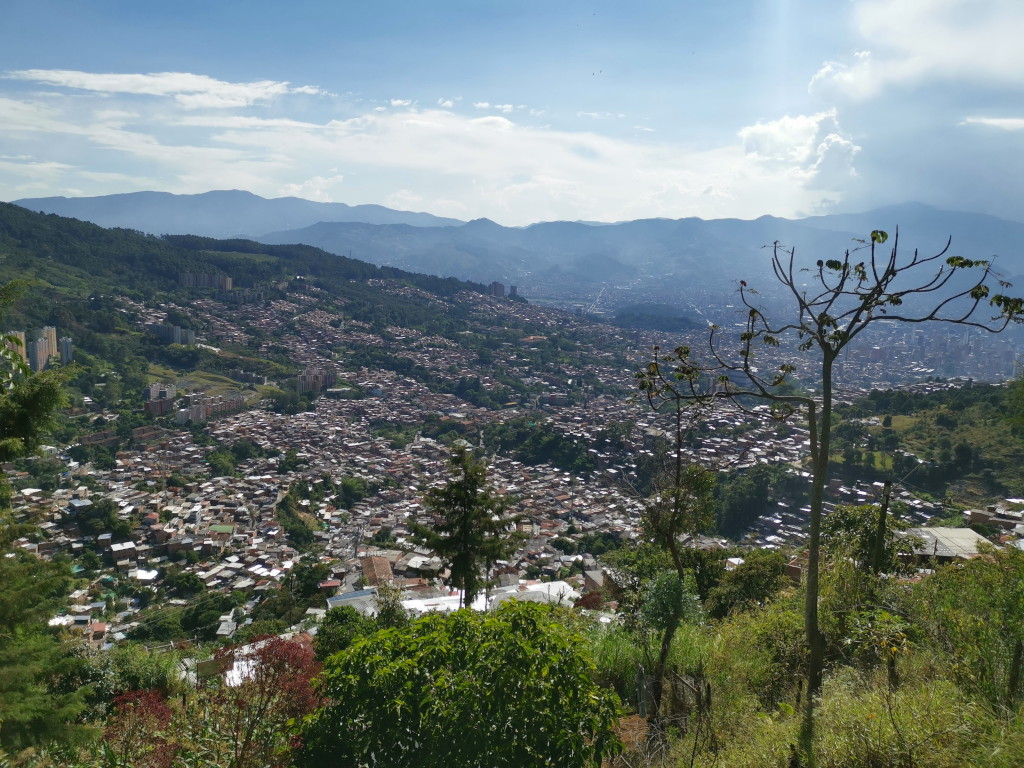
Sometimes residents were blocked from leaving the area by police so that troublemakers could not leave either. Life was miserable for residents but luckily today it is a much safer area. Although there are still improvements to be made it is now safe to visit on a tour.
Arturo, the tour guide who created Urban Coffee Tour Medellin teamed up with Rosa who took over the farm from her father when he passed away. He started to grow coffee as a way to generate income when it was very hard to get work due to the intense situation in La Sierra.
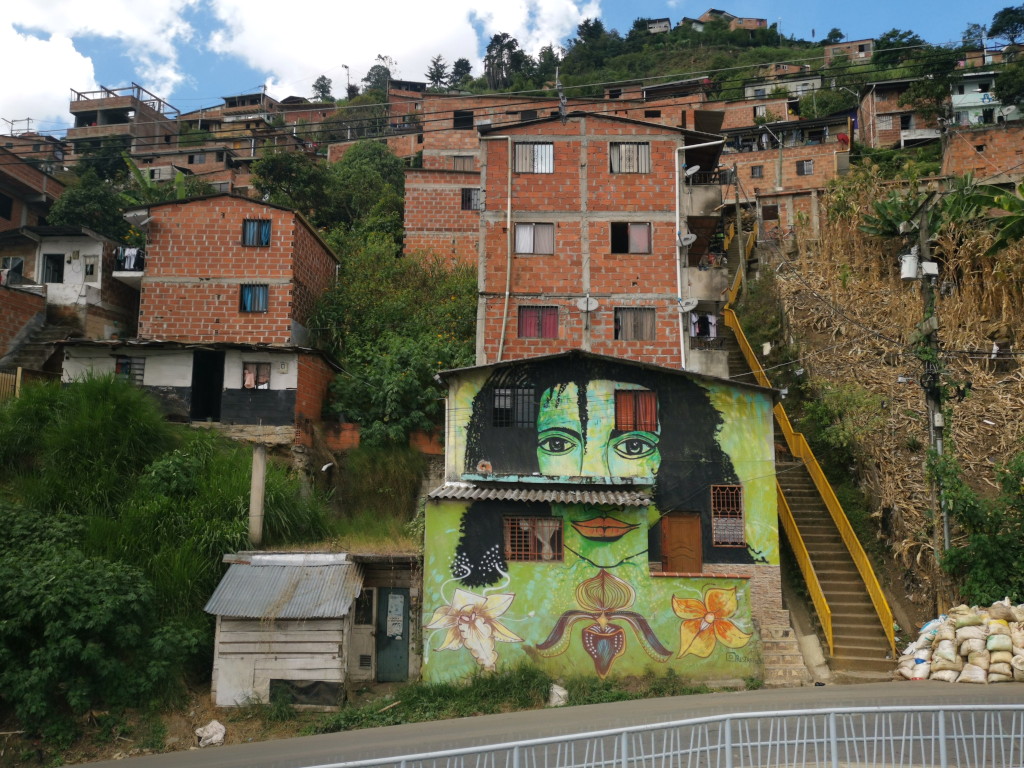
What to expect on the coffee tour
💰 Tour cost: 150,000 pesos (38 USD) p.p.
🕚 Duration: 4 hours
🚠 Ride the cable car (included)
🧑🌾 Handpick coffee beans
🫘 Learn all about how coffee is made
☕️ Enjoy artisanal coffee and a fresh pastry
🤝 Support the local community of La Sierra
🙋♀️ Book at least 1 day in advance here
To start the tour you will meet with your guide Arturo or Claudia at the San Antonio metro station. From there you will travel by tram to the cable car station together, then catch a cable car up to La Sierra (both included in the tour price).
Traveling in the cable car is a really great part of the tour. There is an awesome view and it is really interesting traveling above the communities below.
📸 Tip: If you arrive early at the meeting point check out San Antonio Park. There is some cool street art and a Botero statue that was blown up by the FARC many years ago. It is an interesting spot to visit for a few minutes.
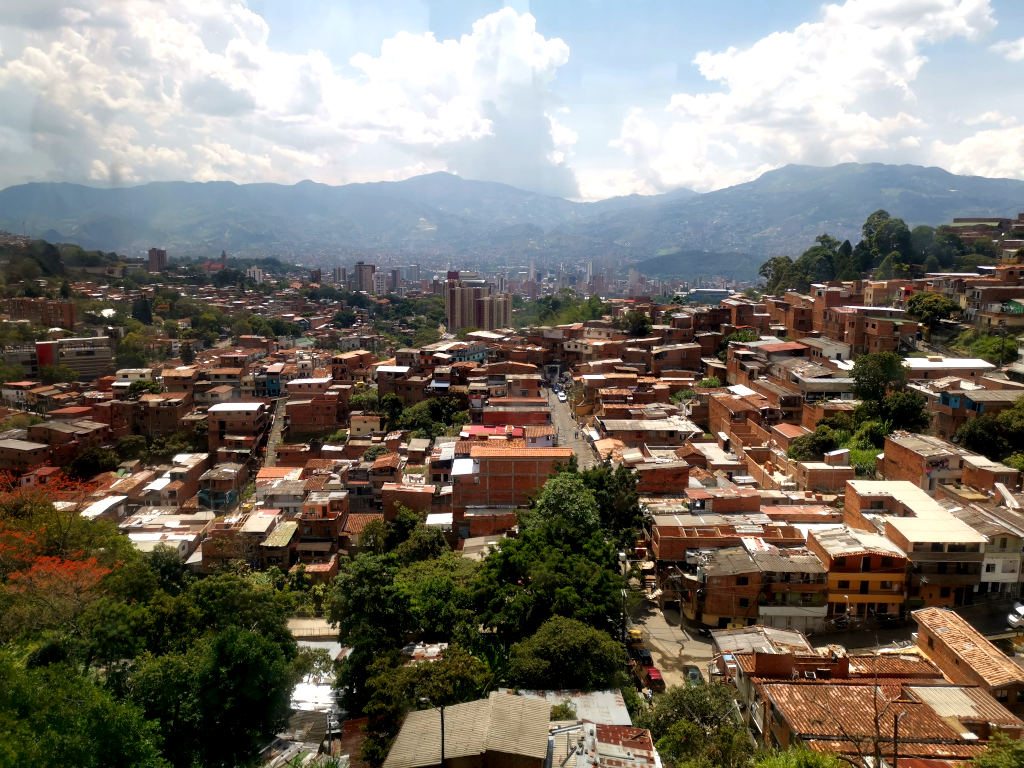
At the top of the cable car, there is a 15 to 20-minute walk to the coffee house in La Sierra. It is up steep roads and some stairs but you will get rewarded with great views over the valley.
When you arrive at the Rosas house in La Sierra you will be told all about the history of Rosas father’s farm. It is a really interesting story.
La Sierra History Insights
You will also be taken to a room where there will be a talk about the La Sierra neighborhood. It is super interesting and this is what makes it so much more than a coffee tour.
Although La Sierra is much safer than it was in the early 2000’s it is still an area where gangs control a lot of the neighborhood. Our guide told us that one day she was taking a tour and a motorbike drove really fast close to the group on purpose.
Usually, you would go to the police for dangerous behavior but in this case, Rosa talked to the local gangs. They then found the offender and made sure he didn’t do it again. A little worrying! But apparently, the gangs are doing a good job of keeping the peace and we felt safe the whole time.
Part of the story was told by Mathias, a young kid, who lives in La Sierra and gets involved by Rosa in the tour as part of the community and to pick up some English.
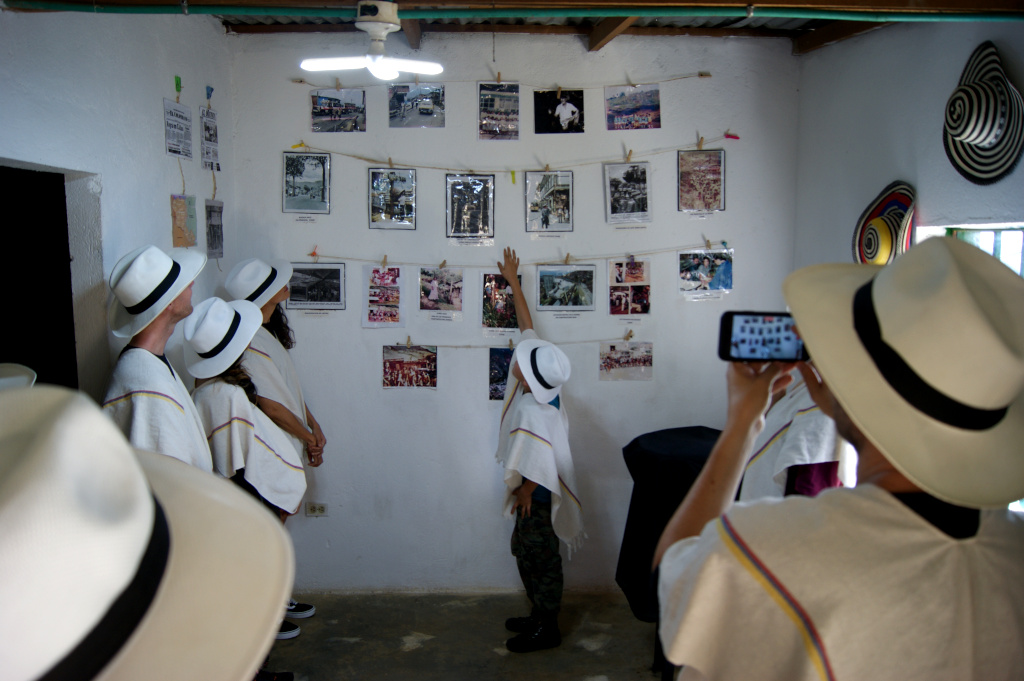
The Coffee-Making Process
After the history of the farm and La Sierra, you will be guided through the artisanal coffee-making process. Plus you will also get to sample some of the coffee from the farm! ☕️
Once you learn about all the work that goes into an artisanal cup of coffee you will appreciate it so much more. It is a very complex process with a lot of effort needed to make a good cup of coffee.
1. Harvesting the beans by hand
The first step is to harvest high-quality beans. When you buy mass-produced coffee such as Nescafe the coffee is very bitter. This is because their beans are not high quality so they over roast them to hide the flavor.
Sounds familiar? Read about how the best chocolate is made! 🍫
To harvest high-quality beans you need to harvest by hand to ensure that only the ripe beans are picked. Mass-produced coffee beans are usually picked by machines and non-ripe beans get mixed up with ripe ones.
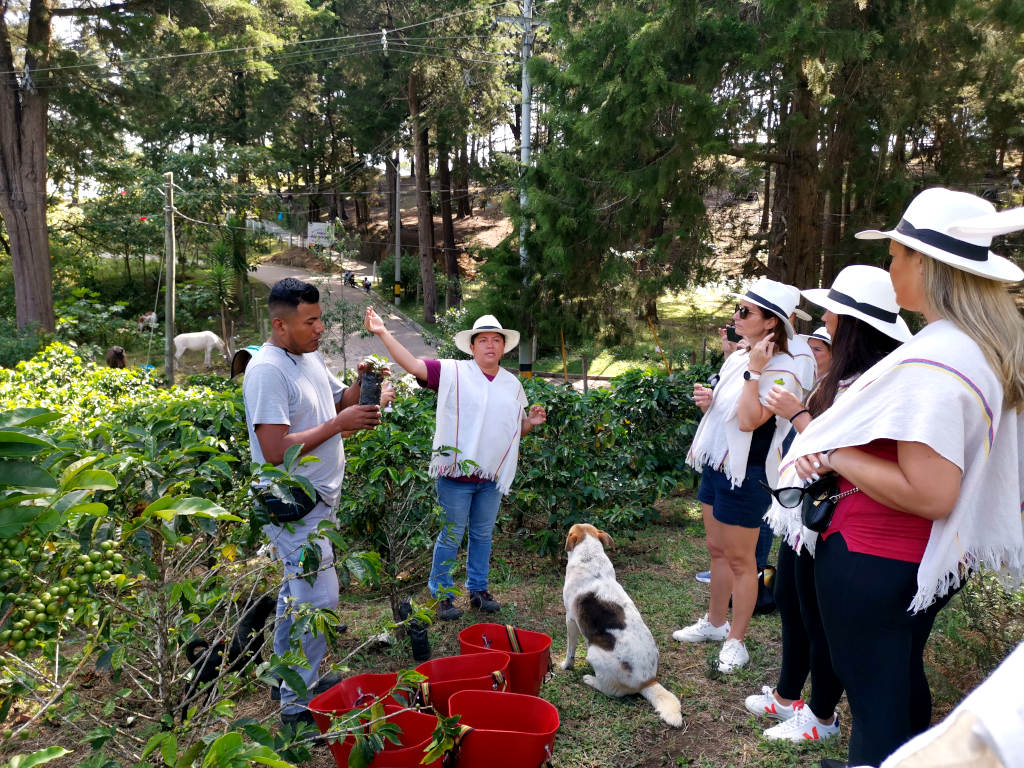
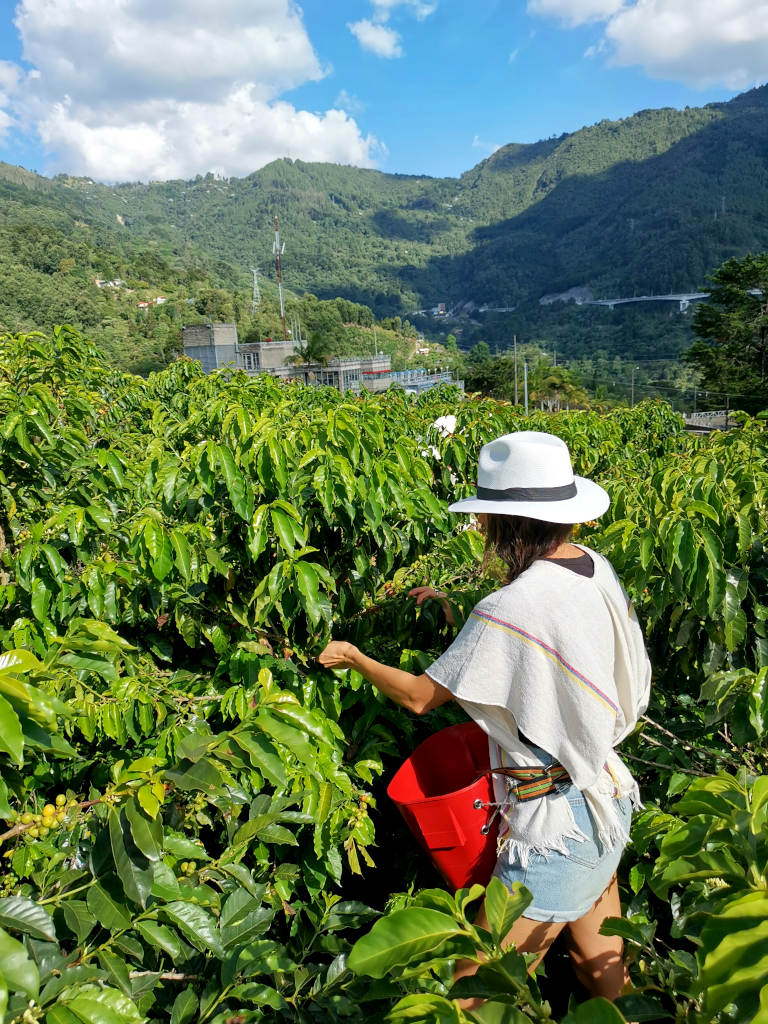
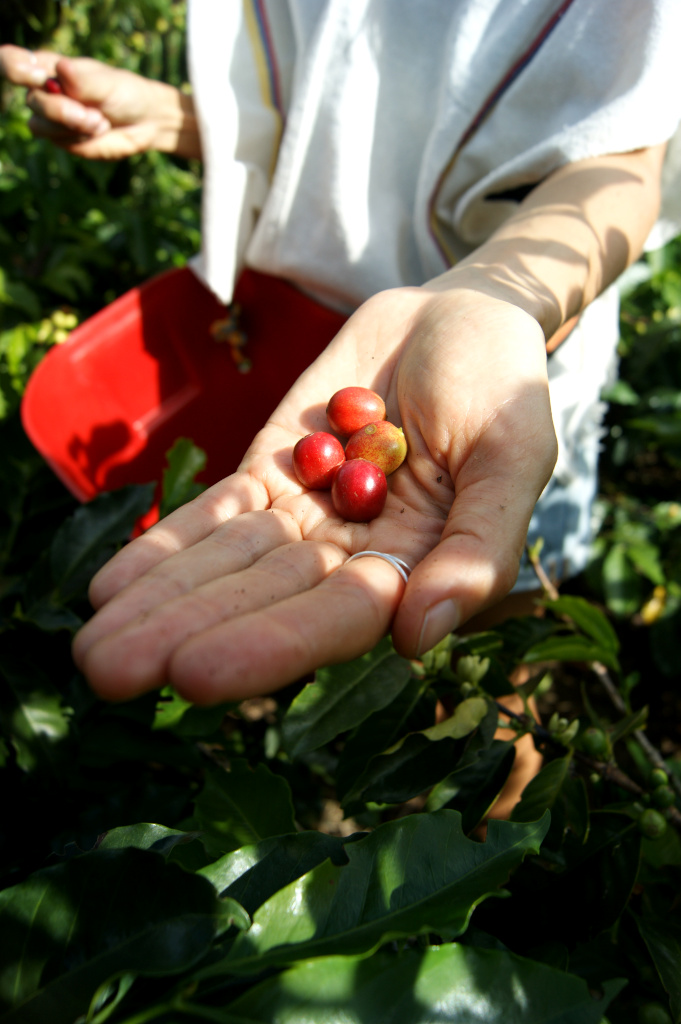
During the tour, you will be taken into the coffee fields to harvest some beans. You will also get to dress up like a traditional Colombian farmer. I thought this was a bit cheesy when I saw tour pictures. But it actually ended up being a lot of fun!
🧑🌾 To make 1 cup of coffee it takes around 70 beans. I didn’t get close to picking that many but it was fun learning how to pick beans and seeing what they look like in their raw form.
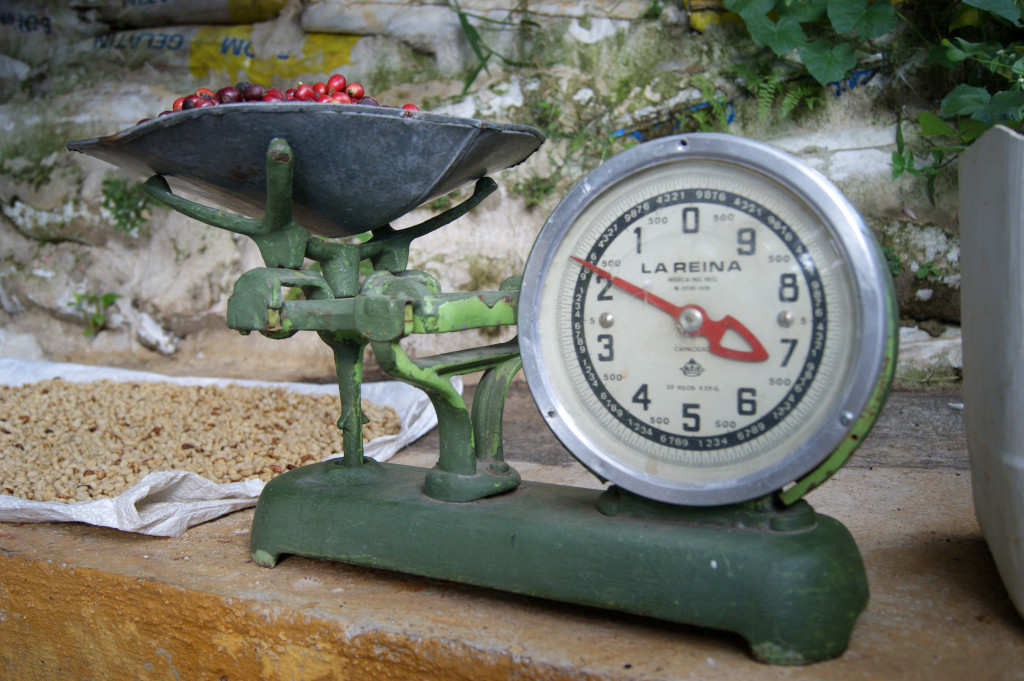
Together our group of 8 picked about 2 kg of beans in about 20 minutes. But apparantly a good picker can pick 400kg of beans in one day! It is hard work so after the tour you will appreciate the work that goes into picking your coffee beans!
2. Selecting the best beans
After the beans are harvested the good beans need to be sorted from the bad ones. It is very hard to tell a good bean from a bad bean just by looking at it.
A bean may have gone rotten on the inside or have insects inside. The only way to sort them out is to put all the beans in a container full of water.
The good beans will sink to the bottom but the bad ones will float to the top. We were told on the tour that if you buy commercial coffees such as Nescafe they also use the coffee beans that float to the top! Yucks 🤢
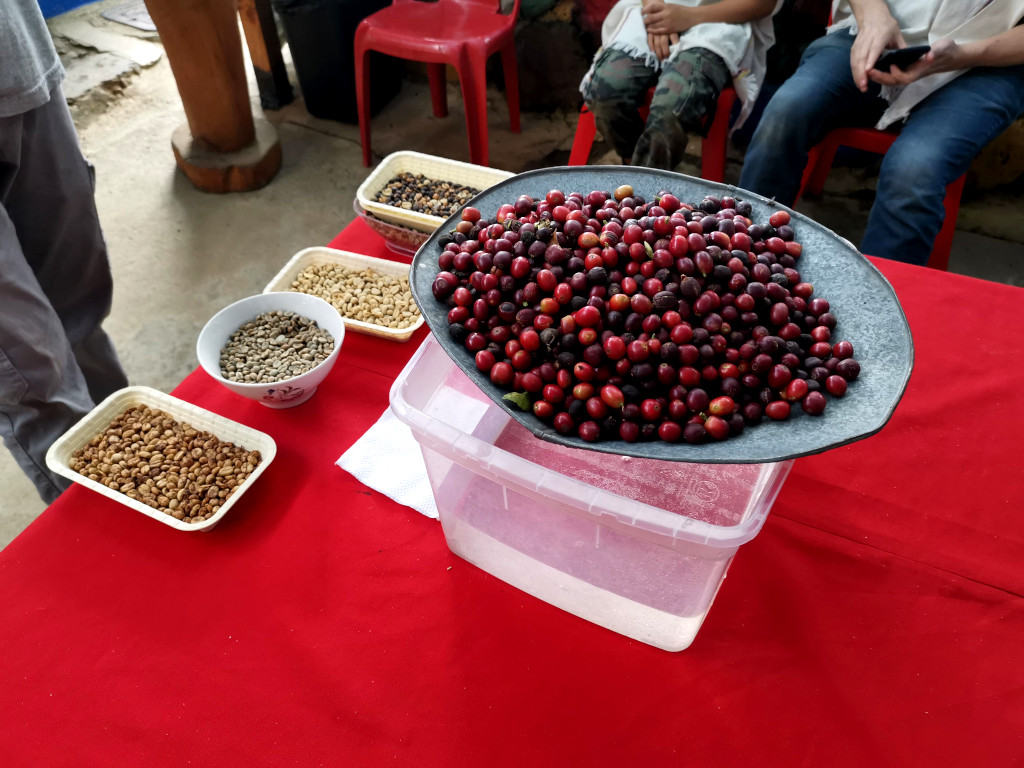
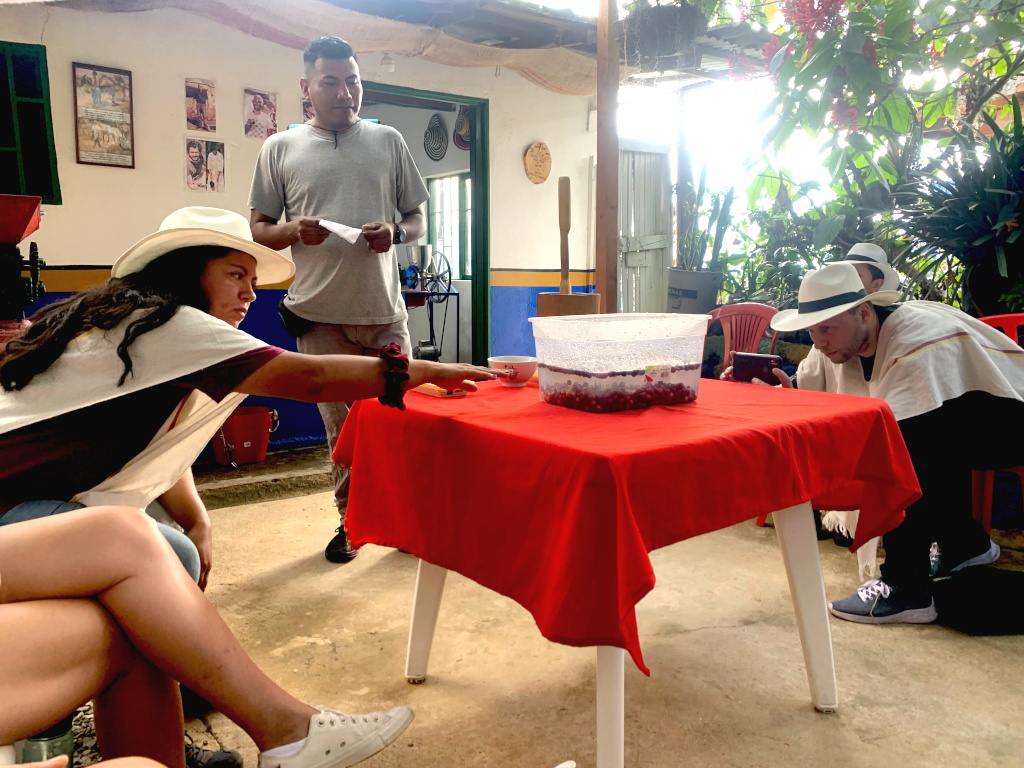
3. Removing the bean skin
Once the beans have been selected the skin is removed from the beans. At Rosa’s farm, this is done with a small grinder that is powered by hand.
This process would be done by huge machinery by most coffee producers. So it is interesting to so it done on such a small scale. And it works!
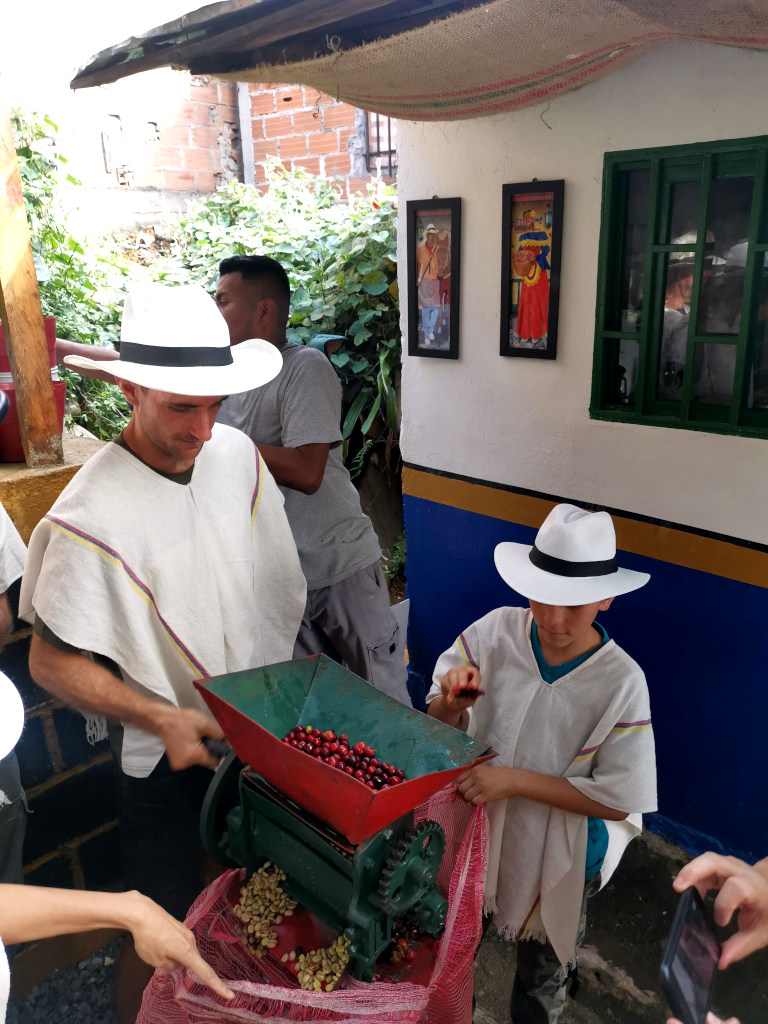
4. Fermenting the beans
After the skins have been removed the beans must be fermented. To do this the beans are placed inside plastic bins. This is an important step to develop flavor in the beans.
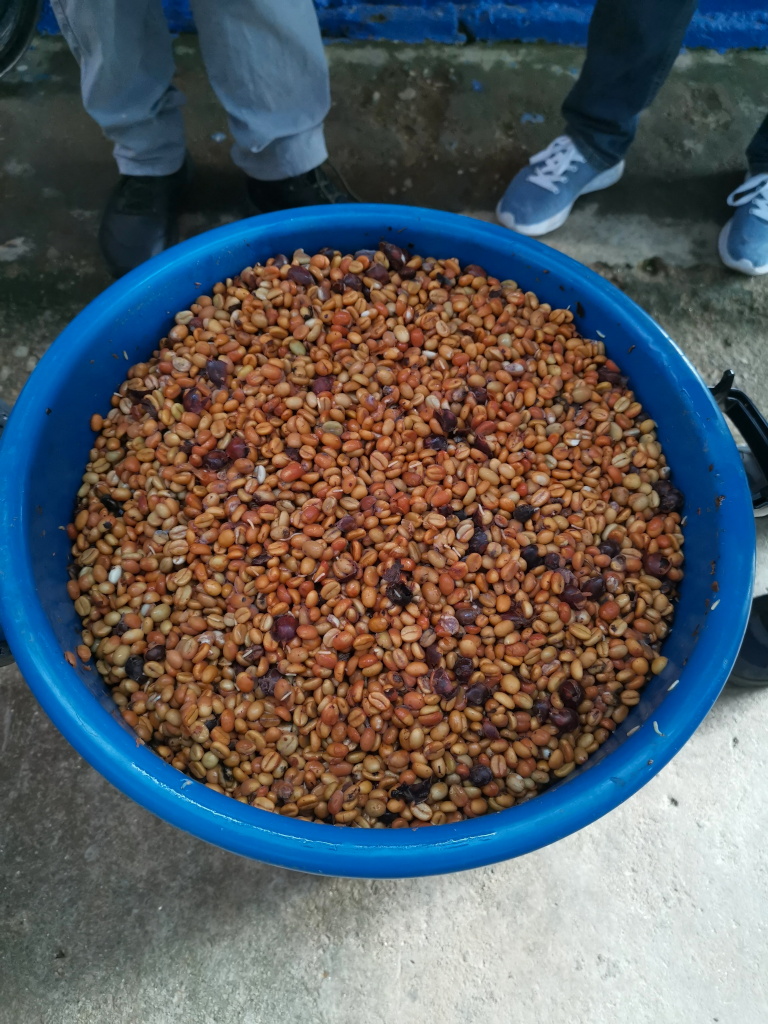
5. Drying the beans
Once the beans are sufficiently fermented they must be dried. The speed at which they are dried is also an important step in creating flavor.
The beans at Rosa’s farm are dried under the shade. Another option is to dry them in direct sunlight which creates a different flavor.
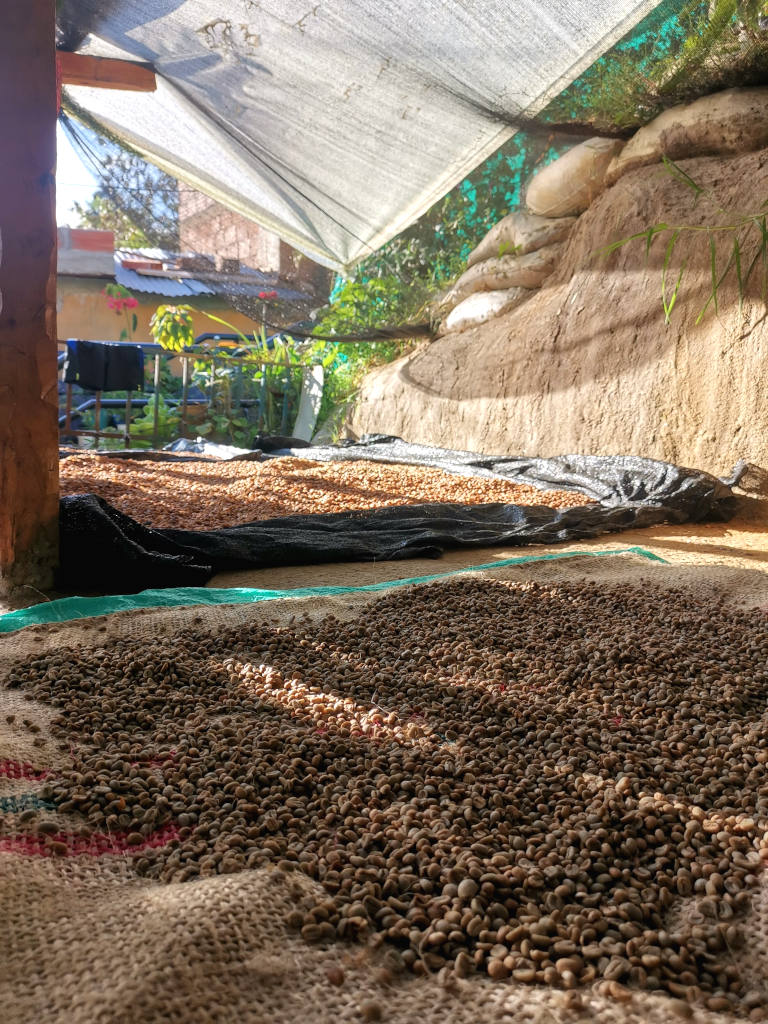
6. Roasting
The final step in creating flavor is the roasting process.
❌ Many people think that dark roast coffee is high quality. Wrong! In reality, large manufacturers overroast their coffee to mask the poor quality of their beans and ensure that every cup tastes the same.
Artisan producers such as Rosa will only medium roast their beans. This will allow you to taste the subtle flavors in the coffee.
It also means that every year the coffee may taste a bit different depending on the weather and other conditions that affect the flavor.
The roasting is once again done in a homemade device. It was invented by Rosas’s father and is once again so interesting to learn about and see.
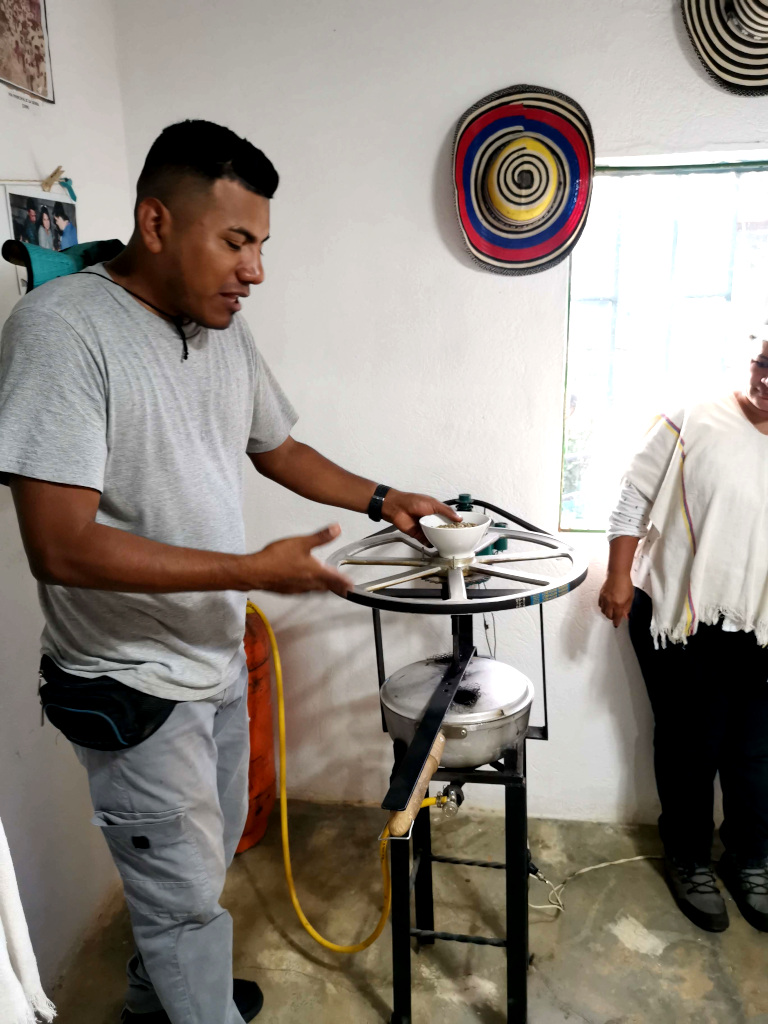
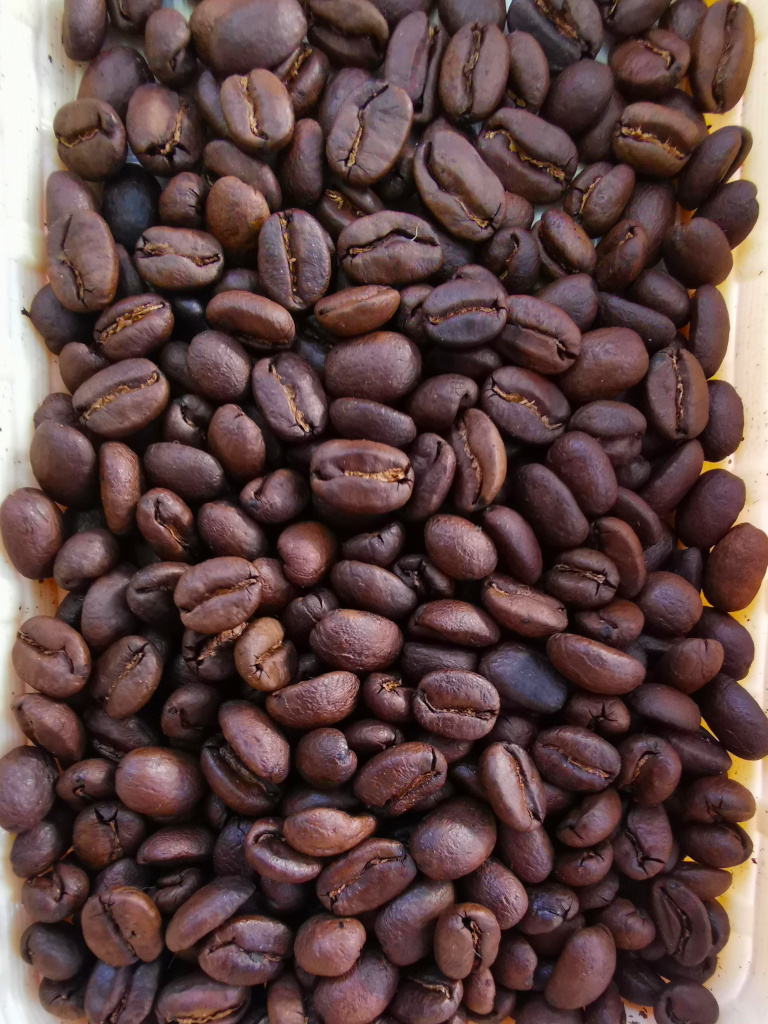
7. Grinding
The last step is to grind the beans. This is important depending on whether you want to make your coffee as an expresso, filter or aeropress. All methods require different sizes of coffee grounds.
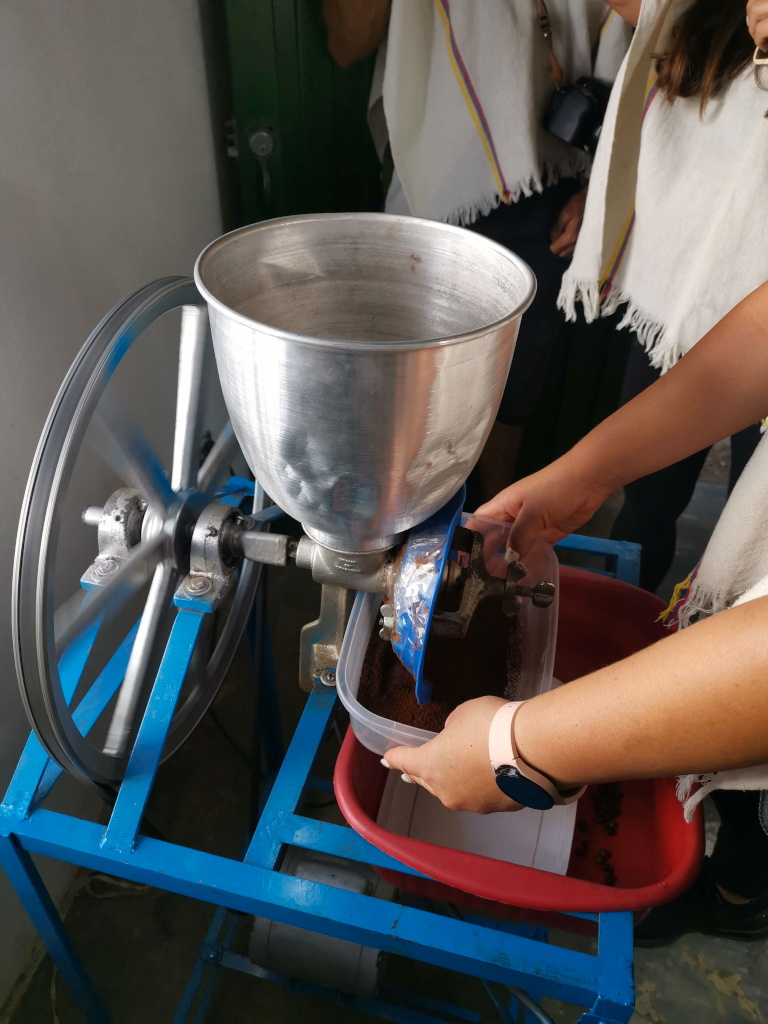
8. Brewing
Once you have been through the whole process you get to sample another cup of coffee while talking about different brewing methods ☕️
Plus you get a chocolate pastry fresh from the oven which was delicious! I usually try and avoid gluten but this pastry was too good not to eat.
It is super interesting watching the whole process. Especially considering that Rosas farm makes such high-quality coffee with such basic machinery.
🛍️ You can buy 250g ground coffee bags at Rosa’s farm for 30,000 pesos (7 USD) in cash
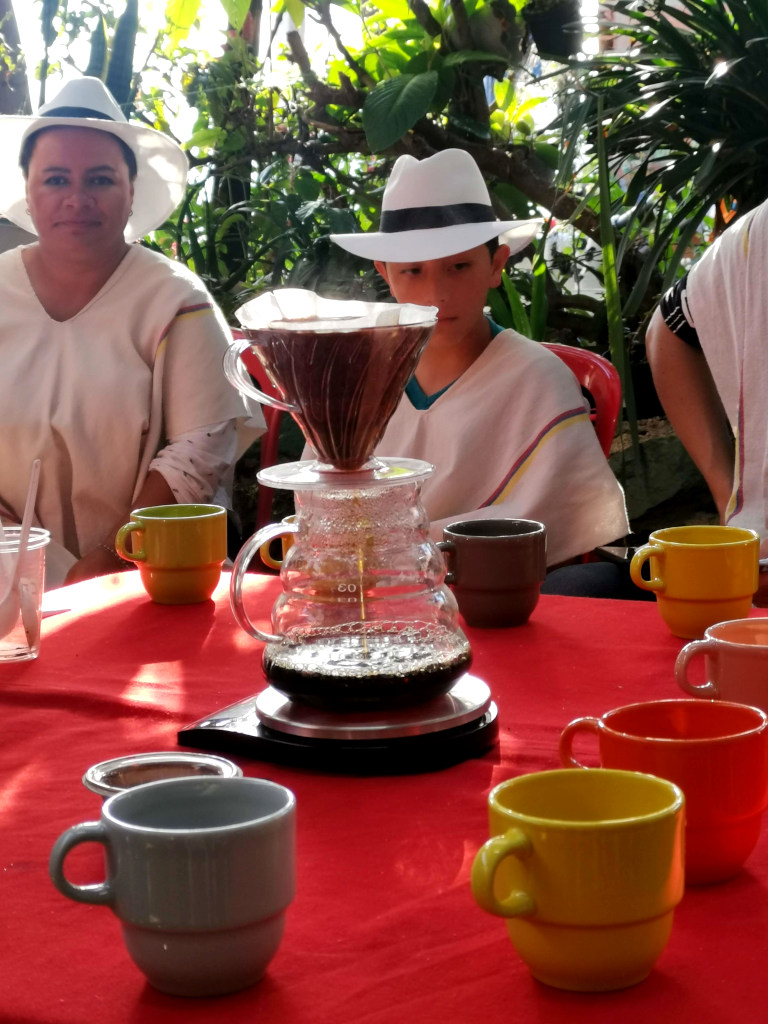
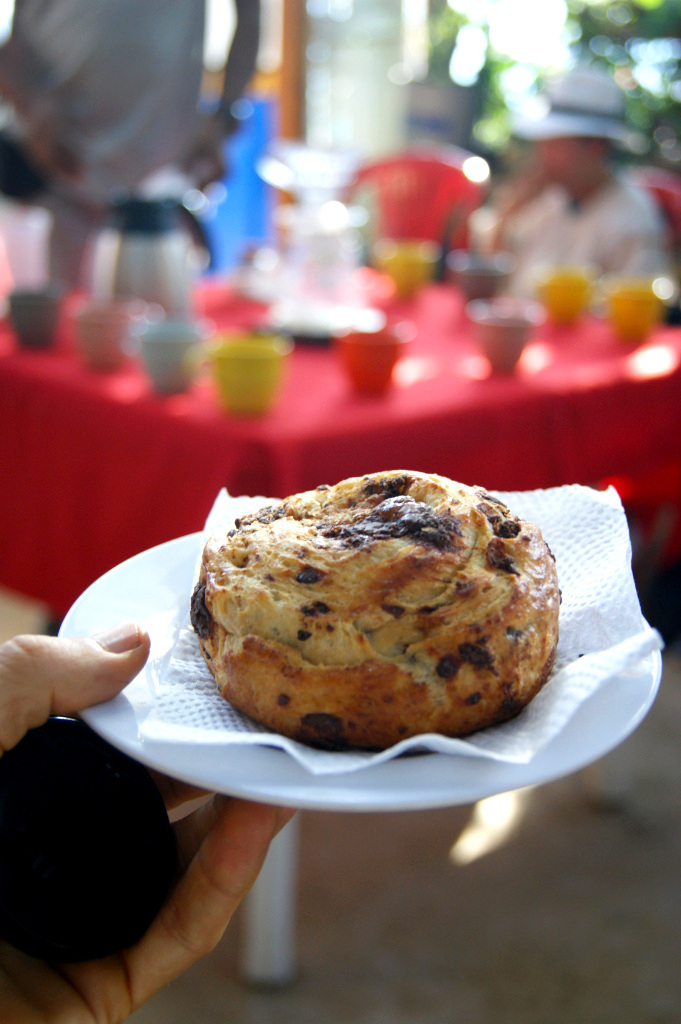
My Medellin Coffee Tour takeaways
Going on a coffee tour makes you realize that you don’t need to buy coffee from major manufacturers. All that they have is the ability to produce coffee on a mass scale.
But in doing so they sacrifice quality and pay farmers worldwide terrible prices for their coffee beans.
So whenever possible try and buy high-quality coffee that is ethically sourced and from smaller farms such as Rosa’s. Your taste buds will say thanks too!
Did you enjoy this blog post? Say thanks with a coffee here! 💛
Enjoy your Medellin Coffee Tour
The tour with Urban Coffee Tours Medellin is one of the best tours I have ever done. It is so much more than a coffee tour. You will learn about the neighborhood and what it takes to make good quality coffee.
I also enjoyed that you are exploring an area of Medellin where no other tourists come. So it really feels like an authentic neighborhood and very different to Communa 13 which is packed with tourists.
So if you are in Medellin and love coffee then I highly recommend doing a tour with Urban Coffee Tours! You will not regret it.
READ ALSO:
- 12 Best Cafes in Laureles, Medellin
- 25 Free Things to do in Medellin
- Why visit Comuna 13 in Medellin
- 12 Unique Things to do in Guatapé
Hey there! Some of the links on this page are affiliate links. This means that if you choose to make a purchase we may get a small commission at no extra cost to you. These commissions help us to generate income and keep creating content for you. So we greatly appreciate your support! Thanks!
Hi, I am Allan, a travel, health and fitness fanatic from New Zealand. I'm a former lawyer who turned into a full-time nomad in 2020. For the last 4+ years I've been traveling the world. I'm always on a hunt for good food, activities on a budget and workouts on the go. I hope you find my tips helpful and get inspired to travel more!

